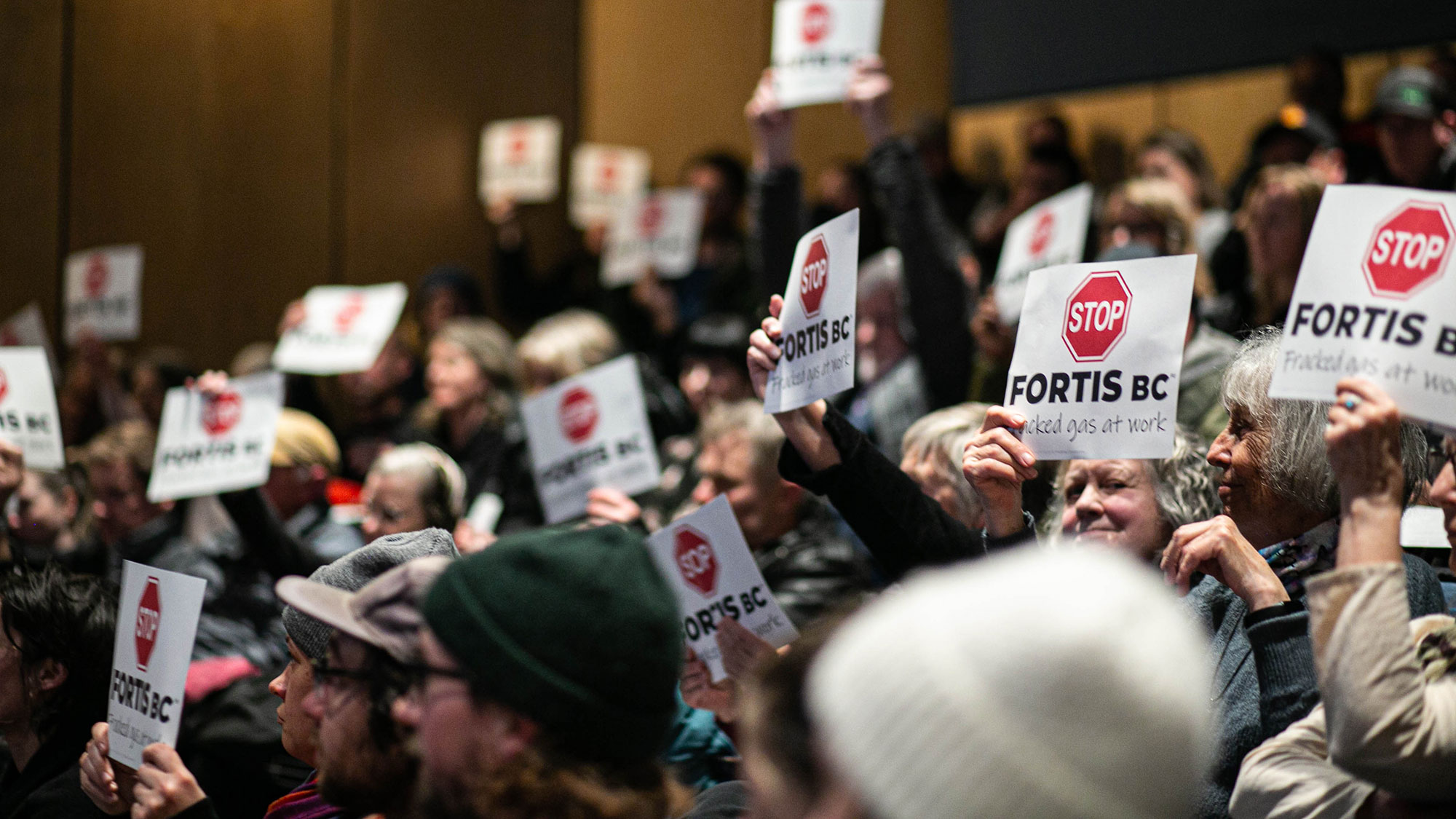
Hold FortisBC accountable.
606 signed. Let's get to 1000.
FortisBC has applied for two Temporary Use Permits from the District of Squamish to build a construction yard and a workcamp for up to 650 workers who will be building the Eagle Mountain Pipleine to Woodfibre LNG.
District of Squamish staff have told FortisBC that the proposed workcamp is not viable in this location due to current zoning and district policies, issues with permitting, access, services, policing, fire, and impacts to existing businesses and residents. But in the rush to construction, FortisBC is ignoring the community's concerns.
FortisBC is failing to ensure the safety and human rights of everyone that lives in the Átl’ḵa7tsem / Howe Sound region.
Why is this important?
Work camps for resource extraction projects can have significant and often unanticipated impacts on nearby communities. Studies during construction of similar industrial projects with large numbers of temporary workers show:
- increased rate of violent crime, including sexual assault and domestic violence.
- One study found a 38% increase in sexual assaults during the first year of an industrial project’s construction phase in Northern British Columbia.
- Sexual violence is disproportionately targeted towards teenage girls, particularly racialized and Indigenous girls.
- increased violence against Indigenous women, children, and 2SLGBTQ+ people.
- increased rental costs and higher home prices.
- increased number of workplace accidents.
- increased substance abuse and misuse.
- increased traffic accidents and collisions.
- increased rates of prostitution and sex trafficking.
- One 2019 report found a significant increase in girls and young women trafficked through western Ontario in connection with mining and forestry camps.
- increased risk of COVID-19 outbreaks and sexually transmitted diseases.
- increased demands on hospitals, counselling, police, and ambulance services, which results in reduced service capacity for residents.
- waste disposal issues.
Example speaking points
- FortisBC is failing to ensure the safety and human rights of everyone that lives in the Átl’ḵa7tsem / Howe Sound region.
- FortisBC's current plans to manage its workers are inadequate, with a lack of enforceability, accountability, and transparency.
- FortisBC has had since 2015 to make a plan to safely house its workers but has failed to do so.
References
- Firelight Group (2017) Indigenous Communities and Industrial Camps: Promoting Healthy Communities in Settings of Industrial Change. [Firelight Group, 2017]
- Edwards, K. (13 May 2019) How we treat women: worker camps make it possible to build infrastructure in remote locations in Canada. Is it worth the human cost? Macleans.
- Tordimah, J. (2021) Man Camps: Temporary Housing Facilities or Sites of Permanent Devastation? The Cases of British Columbia, Manitoba, and Nunavut. Western University.
- Amnesty International (November 2016). Out of Sight, Out of Mind: Gender, Indigenous Rights and Energy Development in Northeast British Columbia, Canada.
- Martin, K. et al. (2019) Violent Victimization Known to Law Enforcement in the Bakken Oil - Producing Region of Montana and North Dakota, 2006-2012. US Bureau of Justice Statistics.
- Manitoba Clean Environment Commission (May 2018) A Review of Regional Cumulative Effects Assessment for Hydroelectric Developments on the Nelson, Burntwood and Churchill River Systems, p. 36.
- Reclaiming Power and Place: The Final Report of the National Inquiry into Missing and Murdered Indigenous Women and Girls, Volume 1a, pp. 584-586.
- Ontario Native Women’s Association (2019) Journey to Safe Spaces: Indigenous Anti-Trafficking Engagement Report 2017-2018, p. 7.
- UN General Assembly, United Nations Declaration on the Rights of Indigenous Peoples: resolution / adopted by the General Assembly, 2 October 2007, A/RES/61/295, available at
- UN General Assembly, Declaration on the Elimination of Violence against Women, 20 December 1993, A/RES/48/104.
- UN Convention on the Rights of the Child, resolution/ adopted by the General Assembly, 20 November 1989, A/RES/44/25. See also, additional relevant Articles: 3 (Best interests of the Child); 6 (right to survival and maximum development); and 37 (protection from cruel and degrading treatment).